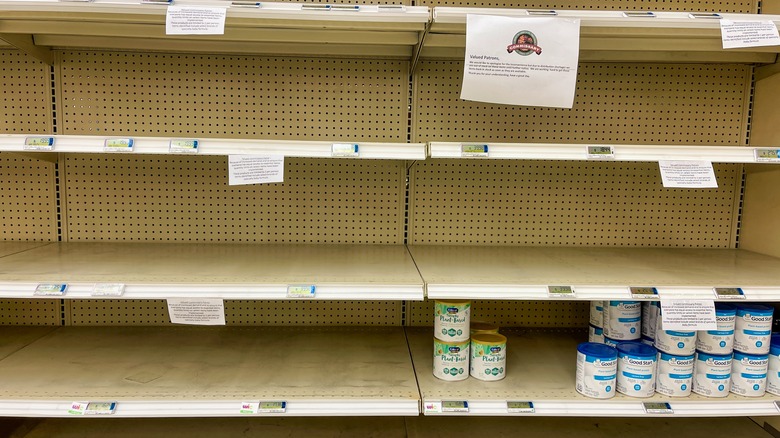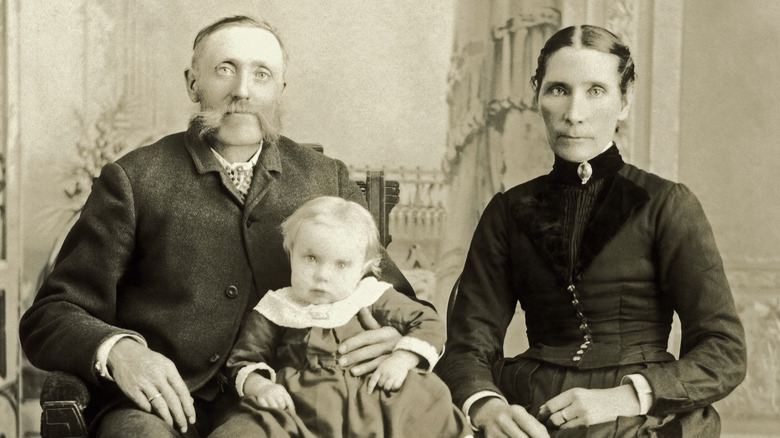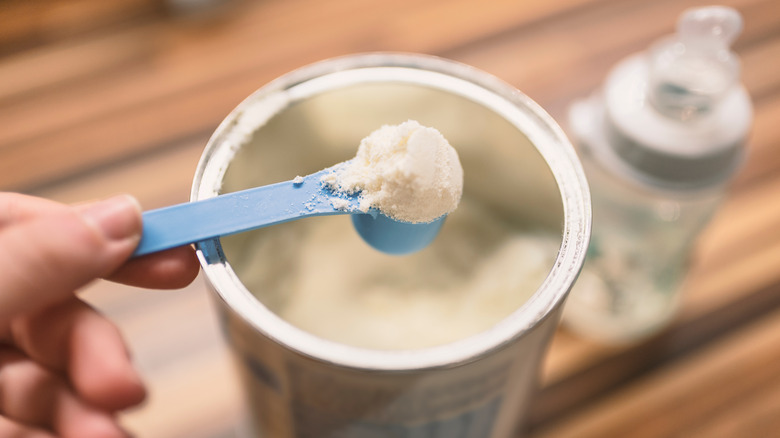Food Historian Carla Cevasco Explains Why The Infant Formula Shortage Is So Dangerous - Exclusive
Carla Cevasco, an American studies professor at Rutgers, is uniquely familiar with what it was like to feed infants and children before the development of baby formula in the mid-20th century. Cevasco has dedicated her career to research about how early Americans of both Indigenous and European descent dealt with hunger, fed themselves and their families, and how food and food insecurity have shaped American culture over the years.
Her research provides invaluable context for the trials that American parents are facing right now. The infant formula shortage has left families struggling to nourish their babies. The many parents who can't breastfeed for various reasons are scrambling to find safe and accessible alternatives, and they're not having much success.
In an exclusive interview with Health Digest, Cevasco discussed why the infant formula shortage is so dangerous for American babies and what today's parents can learn from their ancestors about feeding their children.
What feeding infants was like before formula
Carla Cevasco painted a grim picture of what feeding infants was like before the development of formula.
"Throughout history, some people have always struggled to breastfeed, and families have always needed alternative foods to feed infants," she explained. "Before the 20th century, before current food safety standards or understandings of nutrition, these foods were not necessarily safe or sufficient for healthy development, and infant mortality rates were much higher than they are today."
Cevasco revealed that early American parents who couldn't breastfeed often found an alternative source of breastmilk, allowing family members or friends to breastfeed their babies. However, it was nearly impossible to safely store breastmilk back then due to the lack of refrigeration, so alternative sources of breastmilk weren't always a reliable solution.
Without breastmilk, early Americans came up with their own recipes for baby food. European parents often mixed grain with livestock milk or broth to make a kind of baby cereal. Indigenous parents often crushed corn and nuts to feed to their babies. Though these DIY baby foods did provide some nourishment, they didn't contain the nutrients that babies needed. Countless babies who couldn't be breastfed died of malnutrition.
Why today's formula shortage is so dangerous
When safe and nourishing infant formula was developed in the mid-20th century, it literally saved lives. Parents who couldn't breastfeed finally had a safe, reliable alternative to breast milk that provided everything their babies needed to thrive, and infant mortality rates dropped significantly.
Carla Cevasco said that the current infant formula shortage is so scary because it gives us a glimpse of what life was like before there was a safe alternative to breast milk. She stressed that, unlike early American parents, modern American parents should not try to find alternative food sources for their babies. She warned against using "make your own formula" recipes from social media and emphasized that parents need to talk to their children's pediatricians about options for dealing with the formula shortage.
Cevasco added that there is one valuable lesson today's parents can learn from early American parents: "A constant theme in my research is that people have always agonized about what to feed their children. Today's parents are lucky that they have multiple safe options."
For more insight into Cevasco's work, visit https://carlacevasco.com/.



